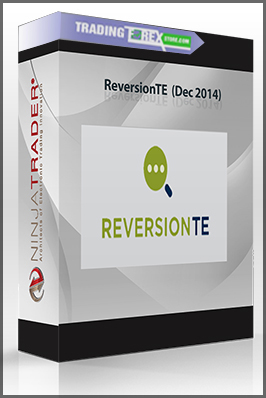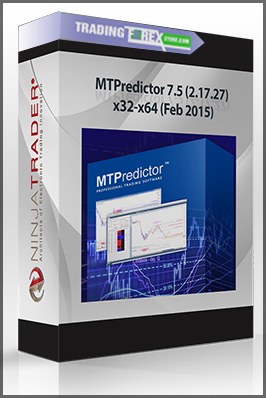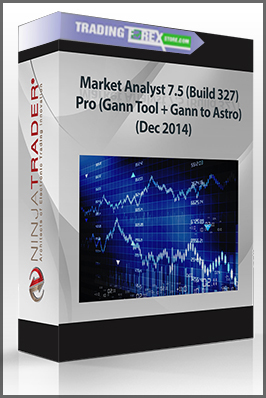

Exotic Options Trading by Frans De Weert
$22.00
- Description
Description
Exotic Options Trading by Frans De Weert
Get Exotic Options Trading by Frans De Weert at bestoftrader.com
Forex Trading – Foreign Exchange Course
You want to learn about Forex?
Foreign exchange, or forex, is the conversion of one country’s currency into another.
In a free economy, a country’s currency is valued according to the laws of supply and demand.
In other words, a currency’s value can be pegged to another country’s currency, such as the U.S. dollar, or even to a basket of currencies.
A country’s currency value may also be set by the country’s government.
However, most countries float their currencies freely against those of other countries, which keeps them in constant fluctuation.
Size 1.7 MB
Description
Written by an experienced trader and consultant, Frans de Weert’s Exotic Options Trading offers a risk-focused approach to the pricing of exotic options. By giving readers the necessary tools to understand exotic options, this book serves as a manual to equip the reader with the skills to price and risk manage the most common and the most complex exotic options.
De Weert begins by explaining the risks associated with trading an exotic option before dissecting these risks through a detailed analysis of the actual economics and Greeks rather than solely stating the mathematical formulae. The book limits the use of mathematics to explain exotic options from an economic and risk perspective by means of real life examples leading to a practical interpretation of the mathematical pricing formulae.
The book covers conventional options, digital options, barrier options, cliquets, quanto options, outperformance options and variance swaps, and explains difficult concepts in simple terms, with a practical approach that gives the reader a full understanding of every aspect of each exotic option. The book also discusses structured notes with exotic options embedded in them, such as reverse convertibles, callable and puttable reverse convertibles and autocallables and shows the rationale behind these structures and their associated risks.
For each exotic option, the author makes clear why there is an investor demand; explains where the risks lie and how this affects the actual pricing; shows how best to hedge any vega or gamma exposure embedded in the exotic option and discusses the skew exposure.
By explaining the practical implications for every exotic option and how it affects the price, in addition to the necessary mathematical derivations and tools for pricing exotic options, Exotic Options Trading removes the mystique surrounding exotic options in order to give the reader a full understanding of every aspect of each exotic option, creating a useable tool for dealing with exotic options in practice.
“Although exotic options are not a new subject in finance, the coverage traditionally afforded by many texts is either too high level or overly mathematical. De Weert’s exceptional text fills this gap superbly. It is a rigorous treatment of a number of exotic structures and includes numerous examples to clearly illustrate the principles. What makes this book unique is that it manages to strike a fantastic balance between the theory and actual trading practice. Although it may be something of an overused phrase to describe this book as compulsory reading, I can assure any reader they will not be disappointed.”
—Neil Schofield, Training Consultant and author of Commodity Derivatives: Markets and Applications
“Exotic Options Trading does an excellent job in providing a succinct and exhaustive overview of exotic options. The real edge of this book is that it explains exotic options from a risk and economical perspective and provides a clear link to the actual profit and pricing formulae. In short, a must read for anyone who wants to get deep insights into exotic options and start trading them profitably.”
—Arturo Bignardi
Table of Contents
Contents
Preface
Acknowledgements
1 Introduction
2 Conventional Options, Forwards and Greeks
2.1 Call and Put Options and Forwards
2.2 Pricing Calls and Puts
2.3 Implied Volatility
2.4 Determining the Strike of the Forward
2.5 Pricing of Stock Options Including Dividends
2.6 Pricing Options in Terms of the Forward
2.7 Put-Call Parity
2.8 Delta
2.9 Dynamic Hedging
2.10 Gamma
2.11 Vega
2.12 Theta
2.13 Higher Order Derivatives Like Vanna and Vomma
2.14 Option’s Interest Rate Exposure in Terms of Financing the Delta Hedge
3 Profit on Gamma and Relation to Theta
4 Delta Cash and Gamma Cash
4.1 Example Delta and Gamma Cash
5 Skew
5.1 Reasons for Higher Realised Volatility in Falling Markets
5.2 Skew Through Time: ‘The Term Structure of Skew’
5.3 Skew and Its Effect on Delta
5.4 Skew in FX versus Skew in Equity: ‘Smile versus Downward Sloping’
5.5 Pricing Options Using the Skew Curve
6 Simple Option Strategies
6.1 Call Spread
6.2 Put Spread
6.3 Collar
6.4 Straddle
6.5 Strangle
7 Monte Carlo Processes
7.1 Monte Carlo Process Principle
7.2 Binomial Tree versus Monte Carlo Process
7.3 Binomial Tree Example
7.4 The Workings of the Monte Carlo Process
8 Chooser Option
8.1 Pricing Example Simple Chooser Option
8.2 Rationale Behind Chooser Option Strategies
9 Digital Options
9.1 Choosing the Strikes
9.2 The Call Spread as Proxy for the Digital
9.3 Width of the Call Spread versus Gearing
10 Barrier Options
10.1 Down-and-In Put Option
10.2 Delta Change over the Barrier for a Down-and-In Put Option
10.3 Factors Influencing the Magnitude of the Barrier Shift
10.4 Delta Impact of a Barrier Shift
10.5 Situations to Buy Shares in Case of a Barrier Breach of a Long Down-and-In Put
10.6 Up-and-Out Call
10.7 Up-and-Out Call Option with Rebate
10.8 Vega Exposure Up-and-Out Call Option
10.9 Up-and-Out Put
10.10 Barrier Parity
10.11 Barrier at Maturity Only
10.12 Skew and Barrier Options
10.13 Double Barriers
11 Forward Starting Options
11.1 Forward Starting and Regular Option Compared
11.2 Hedging the Skew Delta of the Forward Start Option
11.3 The Forward Start Option and the Skew Term Structure
11.4 Analytically Short Skew but Dynamically No Skew Exposure
11.5 Forward Starting Greeks
12 Ladder Options
12.1 Example Ladder Option
12.2 Pricing the Ladder Option
13 Lookback Options
13.1 Pricing and Gamma Profile of Fixed Strike Lookback Options
13.2 Pricing and Risk of a Floating Strike Lookback Option
14 Cliquets
14.1 The Ratchet Option
14.2 Risks of a Ratchet Option
15 Reverse Convertibles
15.1 Example Knock-in Reverse Convertible
15.2 Pricing the Knock-in Reverse Convertible
15.3 Market Conditions for Most Attractive Coupon
15.4 Hedging the Reverse Convertible
16 Autocallables
16.1 Example Autocallable Reverse Convertible
16.2 Pricing the Autocallable
16.3 Autocallable Pricing without Conditional Coupon
16.4 Interest/Equity Correlation within the Autocallable
17 Callable and Puttable Reverse Convertible
17.1 Pricing the Callable Reverse Convertible
17.2 Pricing the Puttable Reverse Convertible
18 Asian Options
18.1 Pricing the Geometric Asian Out Option
18.2 Pricing the Arithmetic Asian Out Option
18.3 Delta Hedging the Arithmetic Asian Out Option
18.4 Vega, Gamma and Theta of the Arithmetic Asian Out Option
18.5 Delta Hedging the Asian in Option
18.6 Asian in Forward
18.7 Pricing the Asian in Forward
18.8 Asian in Forward with Optional Early Termination
19 Quanto Options
19.1 Pricing and Correlation Risk of the Option
19.2 Hedging FX Exposure on the Quanto Option
20 Composite Options
20.1 An Example of the Composite Option
20.2 Hedging FX Exposure on the Composite Option
21 Outperformance Options
21.1 Example of an Outperformance Option
21.2 Outperformance Option Described as a Composite Option
21.3 Correlation Position of the Outperformance Option
21.4 Hedging of Outperformance Options
22 Best of andWorst of Options
22.1 Correlation Risk for the Best of Option
22.2 Correlation Risk for the Worst of Option
22.3 Hybrids
23 Variance Swaps
23.1 Variance Swap Payoff Example
23.2 Replicating the Variance Swap with Options
23.3 Greeks of the Variance Swap
23.4 Mystery of Gamma Without Delta
23.5 Realised Variance Volatility versus Standard Deviation
23.6 Event Risk of a Variance Swap versus a Single Option
23.7 Relation Between Vega Exposure and Variance Notional
23.8 Skew Delta
23.9 Vega Convexity
24 Dispersion
24.1 Pricing Basket Options
24.2 Basket Volatility Derived From Its Constituents
24.3 Trading Dispersion
24.4 Quoting Dispersion in Terms of Correlation
24.5 Dispersion Means Trading a Combination of Volatility and Correlation
24.6 Ratio’d Vega Dispersion
24.7 Skew Delta Position Embedded in Dispersion
25 Engineering Financial Structures
25.1 Capital Guaranteed Products
25.2 Attractive Market Conditions for Capital Guaranteed Products
25.3 Exposure Products for the Cautious Equity Investor
25.4 Leveraged Products for the Risk Seeking Investor
Appendix A Variance of a Composite Option and Outperformance Option
Appendix B Replicating the Variance Swap
References
Index
Author Information
About the author
FRANS DE WEERT is mathematician by training. After obtaining his masters in Mathematics, specializing in probability theory and financial mathematics at the University of Utrecht, he went on to do a research degree, M.Phil, in probability theory at the University of Manchester.
After his academic career he started working as a trader for Barclays Capital in London. In this role he gained experience in trading many different derivative products on European and American equities. After two and half years in London, he moved to New York to start trading derivatives on both Latin American as well as US underlyings.
Frans currently works as a strategy consultant at Booz Allen Hamilton and lives in Amsterdam, The Netherlands.













